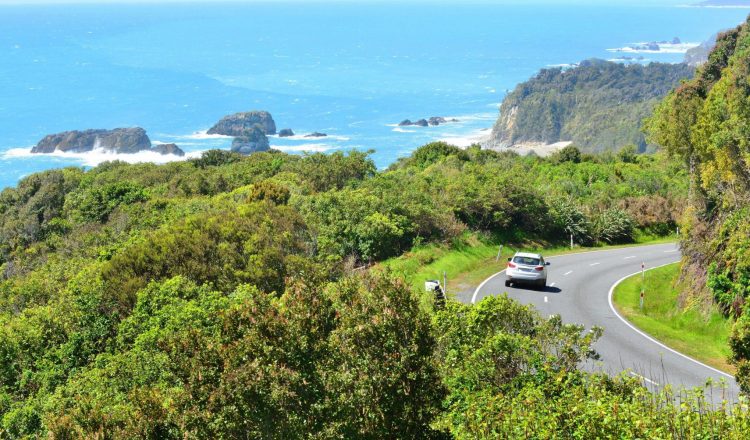휴가철 운전
교통량 증가, 혼잡, 피로, 낯선 곳을 운전해야하는 휴가철에는 각별한 주의가 필요합니다. 다른 운전자에게 매너를 갖추고, 나 혼자 전세 낸 길이 아님을 기억하며, 중간중간 휴식을 취해준다면 운전할 때 냉정을 유지하는 데 도움이 됩니다.
주의를 기울여야 하는 이유
- 도로에는 많은 차량이 있습니다. 차량이 많을수록 충돌 위험이 높아집니다.
- 다른 운전자에게도 낯선 길입니다.
- 휴가철에 사람들은 종종 장거리 운전을 하므로 매우 피곤한 상태입니다.
- 더위, 교통체증, 시끄러운 아이들, 피로와 같은 요인으로 스트레스가 높아집니다.
- 휴가 중인 사람들은 도로 안전(예: 속도위반, 피곤할 때 운전, 무리하게 행동)에 대해 둔감하기도 합니다.
- 휴가철에는 음주운전을 많이 합니다.
안전을 기하려면
휴가철 안전을 위해 도로 이용에 대한 관심을 보이고 다른 운전자들을 존중해야 합니다.
미리 계획하기
- 출발 전 본인의 몸상태와 차량이 안전한지 확인하세요.
- 자주 정체되는 고속도로를 피하면서 여행을 계획하세요.
- 빡빡한 일정의 휴가보다 느긋한 휴일같은 휴가를 즐기세요.
- 차를 멈추고 자주 휴식을 취하세요.
변경 사항에 주의
휴가철에는 교통 체증을 줄이고 병목현상으로 인한 추가 지연을 방지하기 위해 일부 차선을 폐쇄하는 경우가 많습니다. 때로는 대체 경로가 안내되기도 합니다.
상황에 맞춰 운전하기
여기엔 날씨만 해당되는 게 아닙니다.
- 현재 주행중인 도로
- 교통 상황
- 속도(속도 제한과 ‘안전 속도’는 다를 수 있음)
- 피로감, 운전에 영향을 미칠 수 있는 약복용
- 운전중인 차량과 짐
피로야 가라!
장거리 여행은 늘상 피곤하기 마련이고 운전할 때는 이 피로함이 치명적입니다. 운전자의 피로는 지난해 54명의 교통사고 사망자와 1,000명 가까운 부상자의 원인이었습니다. 신선한 기분으로 운전할 수 있도록 미리 충분한 휴식을 계획부터 세우세요. 여행에서 휴식을 취할 장소를 미리 짜두세요.
가장 안전한 경로 식별
어떤 경로는 다른 경로보다 안전합니다. 나무, 도랑, 좁은 공사로와 같은 것을이 위험을 증가시킬 수 있음을 알아야합니다. 교차로는 위험할 수 있으며 중앙분리대가 없는 혼잡한 도로도 마찬가지입니다. 이러한 지식을 바탕으로 여러분은 상황에 맞게 운전을 조정할 수 있으며 위험성이 높은 시골 도로에서 각별히 주의를 기울일 수 있습니다.
KiWirap 에서 어떤 어떤 경로가 더 안전하고 어떤 경로에서 주의가 필요한지 알아볼 수 있습니다. 이 사이트는 지역별로 다양한 시골 주 고속도로의 안전 위험을 평가합니다.
여행 전
- 차량을 점검하세요. 대부분의 정비소에서는 타이어 트레드 및 압력, 조명, 브레이크, 냉각 시스템 및 기타 구성 요소에 대한 안전 점검을 실시합니다. (잘 튜닝된 차량은 연료 효율이 높기 때문에 연비도 절감 가능)
- 피트니스 및 차량 면허증이 최신 상태인지 확인합니다.
- 운전면허증을 확인하세요. 만료되었거나 만료가 가까워진 경우 출발 전에 갱신해야 합니다.
차량을 구입하거나 빌릴 때는 항상 여유가 있는 가장 안전한 차량을 선택하십시오.Rightcar에서 차량 안전성을 확인할 수 있습니다.
차에 짐을 싣을 때 모든 것이 안전하게 움직이지 않는지 확인하세요. 작은 물체도 급정거나 충돌 시 위험한 미사일로 변합니다.
트레일러와 캐러밴 확인
모든 견인장치를 확인하고 커플링이 호환되는지 확인하세요. 안전 체인, 트레일러 조명, 타이어 및 브레이크도 점검해야 합니다.
트레일러를 견인하는 경우 개방 도로에서 최대 속도 제한은 90km/h입니다. 다른 차량이 추월할 수 있도록 안전을 확보한 후 차를 왼쪽편에 천천히 세워주세요.
무거운 짐들은 무게가 잘 분산되도록 적재합니다.
침착하세요
휴가철 운전은 혼잡한 도로, 느려터진 관광객, 여름에는 숨막히는 더위, 겨울에는 빙판길 때문에 그냥 집에 가고 싶은 마음이 들 수 있어요. 이때는 아래오 같이 냉정을 유지하세요.
- 매너운전 – 차선을 돌리거나 변경하기 전에 다른 사람들이 교통량에 합쳐서 표시하도록 하십시오.
- 추월할 때 빼고는 좌측 차선입니다.
- 천천히 운전할 때에는 다른 사람이 추월할 수 있을 타이밍에 맞춰 차를 옆에 세워주세요.
- 인내심을 갖고 다른 운전자의 공격적인 행동에도 흥분하지 마세요.
- 트럭과 견인 차량은 속도 제한이 더 낮습니다. 추월 차선을 기다리거나 시야가 탁트이고 안전하게 추월할 수 있는 충분한 공간이 확보될 때까지 기다리세요.
- 자전거와 보행자를 항상 주시하고 지나갈 수 있게 충분한 공간을 주세요.
- 시골길에서는 말(동물)을 조심하세요.
안전벨트
안전벨트를 매지 않아서 가족 휴가가 비극으로 끝나지 않도록 해주세요. 운전자는 15세 미만의 모든 승객이 안전벨트를 매게 해야할 법적 책임이 있습니다. 7세 미만 어린이는 자신의 크기와 체중에 적합한 승인된 어린이 안전 벨트를 착용해주세요.
모두가 함께 사용하는 도로
휴일에는 교통량이 크게 증가하고 보행자, 자전거, 대형 트럭, 버스, 캠퍼밴 및 견인 보트, 캐러밴과 같은 차량과 도로를 함께 사용합니다.
앞차와 안전 거리를 유지하며, 이렇게 하면 앞 차량이 급정거했을 때 안전하게 정지할 수 있습니다.
보행자, 자전거, 오토바이를 지날 땐 특히 주의를 기울여야 합니다. 이들은 차량 운전자보다 보호 장치가 부족합니다. 여름에 여행경로를 갈 때는 특히 자전거를 타는 사람들을 주의깊게 지켜보세요.
자전거를 타거나 오토바이를 타는 경우 눈에 띄는 옷, 헬멧과 같은 적절한 보호 장비를 착용해야 합니다.
아이들을 주시하세요
도로 위 아이들을 조심하세요. 어린 자전거 이용자와 보행자는 차량 속도를 제대로 판단하지 못하기 때문에 어떤 일이 생길지 예측이 불가능합니다. 연휴동안 아이들은 자전거 타는 법을 새롭게 배우기도 합니다.

















































